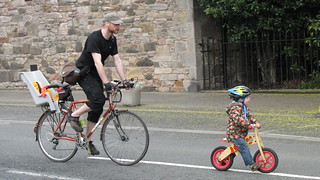Shows how long it was since you read the Highway Code - it includes a chart of stopping and thinking distances, and as already highlighted the dissipation of kinetic energy delivers a non linear result so the reason that you stop from 20 mph in the distance that you only slow to 26 mph from 30 mph is that you have dissipated the same amount of KE but have a load more to dissipate.
Kaye should get Ben Hamilton Baillie to bring in some of the research.
1) a couple of million years of extensive development (breeding) has delivered a human body which has a maximum operating speed of around 20mph (hard steady running) and can happily smack in to rocks and trees at this speed, and for a healthy body no bones will break and minimal internal damage will result (skull is IIRC at 30% of fracture capacity for a 20mph simple flat impact)
2) this also relates to perceptive ability - above 22mph the ability to scan effectively the 120 degrees of forward vision diminishes and we require road markings and guidance systems as speeds increase. In experiments where all road signs and markings are removed the default speed drops to c.18mph as people negotiate their priority of passage.
3) at 20mph the dynamic envelope of all vehicles is 'tighter' permitting for many roads, the addition of extra road 'lanes' or tighter spaces to roads to operate, releasing valuable urban land for more remunerative uses (ie development)
Noise is lower, damage is lower, especially from larger vehicles, IIRC this is linked through a factor of 4 times the speed, so 1 speeding truck does as much damage as 100,000 speeding cars, and probably around 1bn cyclists.
Pity I'm busy tomorrow down South


 posts
posts
